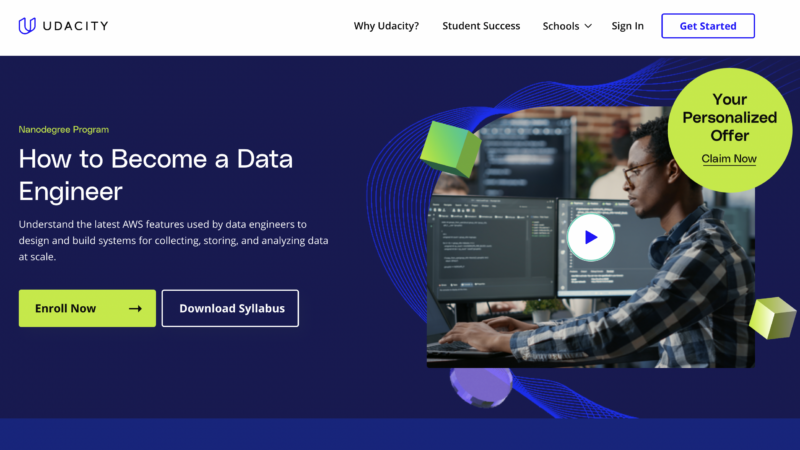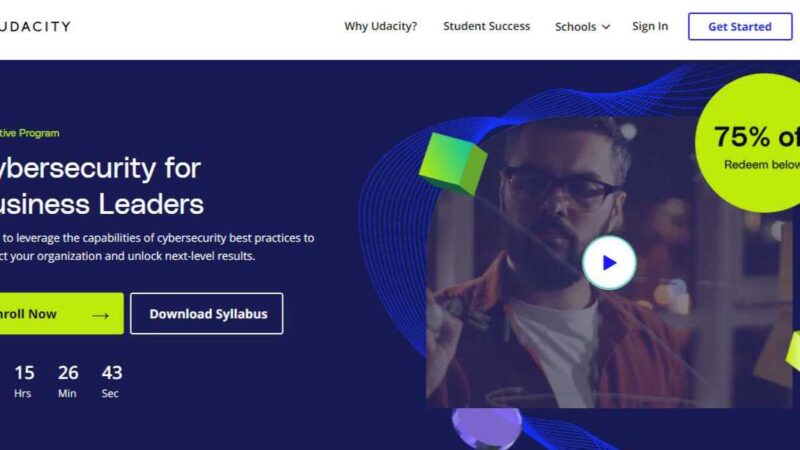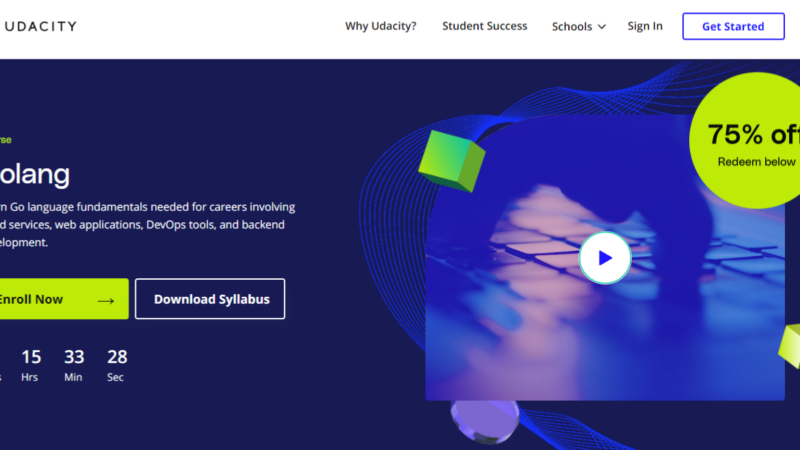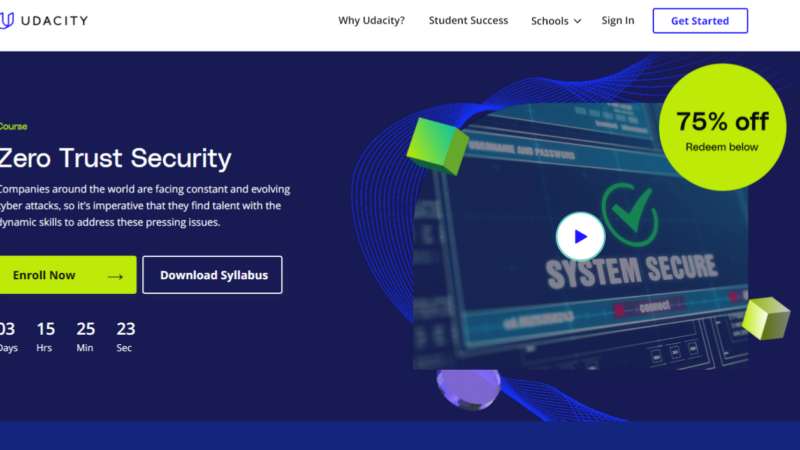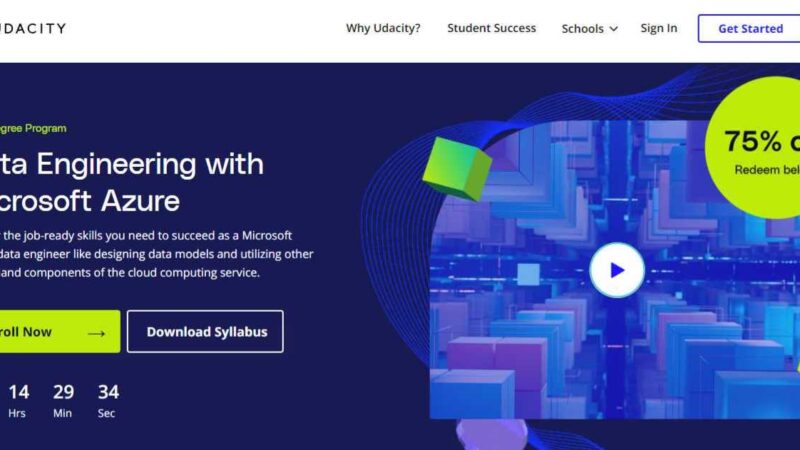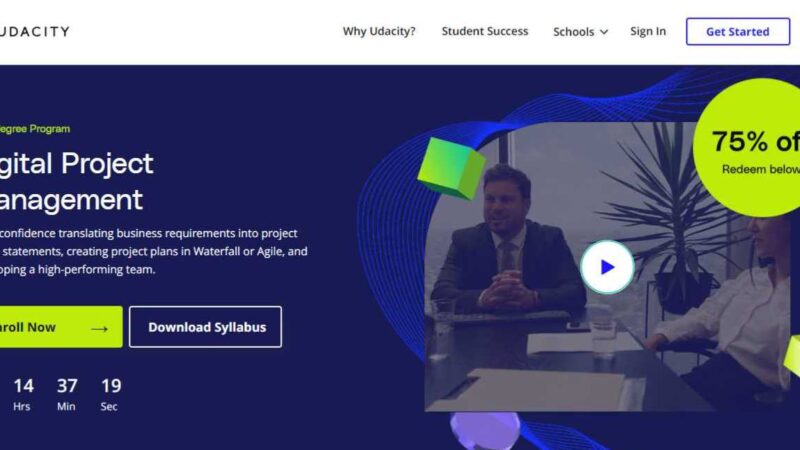Udacity Blockchain Developer Nanodegree Review

Blockchain is taking the online world by storm. Companies can now have specific architectures constructed to suit their day to day activities all while keeping customer and sensitive company data safe. This technology may have been around for some time but, its only barely getting to the point of reaching its maximum potential. As a Blockchain Developer, professionals work side by side with companies to help them reach their digital goals. They create innovative ways to make businesses run more efficiently, processing data and producing systematic workflows that enhance user experience.
This is not knowledge that comes overnight, and some type of certification is needed to break into the field. This is where academies like Udacity come into play, offering learners a chance to get their foot in the door while enjoying flexible learning from anywhere around the world. This sounds great on the surface but, we decided to dive in a bit to find out if the Blockchain Developer Nanodegree is worth a shot. On top of that, we checked out the job market, both current and future, to see if a career in the field is worth it. Before we break down the course, we’ll start by getting you familiar with the academy, Udacity.
Udacity + Nanodegree Extras
Udacity is an online academy that sprang into life from humble beginnings. With the idea to offer free online computer science courses to any and everyone wanting to partake, Udacity was born out of the brilliant minds of two Stanford University professors. Since 2012, they’ve been hard at work, bringing large companies and successful graduates together. They’ve worked closely with industry giants in the development of a few of their courses, including names like Amazon, Google and even Uber.
The Udacity nanodegrees are said to take less than a year and come with a few added perks. These are meant to enhance learner experience, with the goal of doing everything possible to aid in learner’s success. These extras include:
A Completely Flexible Schedule
The courses are open to you for as long as you like. You have the power to choose your schedule, using this freedom to tailor it to your liking. Any time of the day and as often as you like, you can logon without worrying about running late.
A Supportive Community
This community includes a forum just for students. Here, you can get social or seek help when you need it. You’ll be able to speak with learners just like you all the way to graduates, making connections and gaining support. Apart from your peers, you’re also introduced to a mentor that will be there to help in case you run into any technical difficulties.
Real Industry Projects
Udacity aims to send their graduates off with real experience that can be useful from day one. For this reason, most of the projects included in the nanodegrees are based off of issues in the field. Learners should feel confident enough in the curriculum to take what they’ve learned and apply it.
Killer Career Services
On top of everything else, the academy puts a lot of efforts into helping graduates successfully integrate into the workforce. This includes a review and feedback on both resumes and portfolios plus, an expert opinion on improving pages like LinkedIn and GitHub. After those are good and ready to go, graduates can sign up for interview prep with a career services staff member and, even score access to the career database where recruiters are on the prowl.
Meet the Instructors
The academy puts in some pretty solid efforts when it comes to creating content. Not only do they work in collaboration with companies in the industry but, they also seek experts in the field with long lists of impressive credentials. You can see for yourself here, as we take a look at the instructors for this course.
Brandy Camacho
Brandy is not only lead of curriculum for this particular degree but is also founder of Network Designs. Her specialty is software solutions, where she works at the very core shaping and designing architectures.
Jessica Lin
Her background in Biomedical Engineering led her to her work with advanced technologies in the realm of healthcare. She continues her work and also instructs here at the academy for this course.
Joe Nyzio
Joe studied neuroscience and later joined the Udacity team. As part of the academic staff, he’s taught other nanodegrees including Data Analyst and Tech Entrepreneur.
Rachna Ralhan
Not only is her educational background impressive but, also her years of work experience. After her masters in Software Management, she went on to work for Intel, AMD and Cypress among other A-list companies.
PK Rasam
Working with Blockchain firsthand as a Founder and Chief officer for LINCD, PK has put his focused on evolving crypto intelligence.
Nik Kalyani
As a Blockchain architect, Nik has worked with the building of micro-contracts. He is the cofounder of CTO and the founder of two up and coming powerhouses TryCrypto and Walkstarter.
What are the Prerequisites?
A course like this comes with a bit of recommended knowledge before enrolling. Though you’ll receive some introductory to the specific information that comes included in the course, you could begin to feel lost if you’re not at least familiar with a few things. The academy asks that you have:
- More than a years’ worth of experience with an object-oriented programming language
- App development skills using JavaScript
- Understanding how servers are built
- Knowledge of client-server models
- Proficiency with remote API
If you’re reading these and feel like this course could be a bit out of your league, you can hop over to introductory or free courses offered by the academy to brush up. You can find all of the information you’ll need to find these here: https://www.udacity.com/courses/all
Course Breakdown
Now, on to the course. The entire course is broken into 4 sections followed by a capstone where you get to put it all together. Below, we’ve broken down the sections, including a description of what you’ll be seeing in each.
Blockchain Fundamentals
You’ll start off with an introduction to Blockchain getting a good and detailed explanation of how it works. From the very beginning, you’ll work to build your very own blockchain with Node.js.
Ethereum Network
After you master the basics and understand how it all works and comes together, you’ll get a chance to dive in a little deeper. In this part, you’ll meet Ethereum, using the network to build Dapps.
Blockchain Architecture
Architectures of Blockchains are important to producing the desired results. The ability to tailor workflows for companies of all sorts is highlighted in this section, where you’ll see how security and privacy can benefit through building. At the end of this section, you’ll work with tracking items as they make their way through blockchains.
Dive Deeper into Dapps
You’ll get to see how decentralized applications work. See how you can create triggers that will cause the Dapp to react based off of outside factors. At the end, you’ll get to apply what you’ve learned working with a Dapp created for flight delay insurance.
Capstone
This is your time to shine. Take all that you’ve learned and mash it together along with your creative spark in building your very own Dapp from scratch. The theme you’re given is a property listing app, where you’ll have certain features to add and all the rest is left to you.
How Long does the Course Take?
Sounds like a lot to pack into one course. While you can take all the time you need, the academy estimates that it will take learners who spend about 10 hours per week only 4 months. While you’re totally free to choose your timeframe, keep in mind that a few of your projects will come with due dates that you must meet. These however come with plenty of time to prepare, even if you’re a master procrastinator.
Before taking it too easy though, beware that the cost goes up the longer you take. How is that you might ask? We will break down the cost coming up.
What is the Cost?
Udacity has a bit of a different take on course costs, one that is put in place in hopes to remain eligible for a wide range of budgets. You have two options when paying for the course, which we will break down below. Before we do, we’d like to let you in on the deal that is currently taking place, which comes with an entire month for free. You can scoop up this offer no matter which way you choose, both coming with their benefits depending on what your schedule allows.
Pay Per Month
As you can probably guess, this comes with a payment system that gives you access per month. Each month that it takes you to complete comes with a price of $359 when going with this option. While you still have a free month ready and waiting for you, the cost could easily add up if you decide to take your sweet time.
Udacity’s Deal
For this option, combined with the current promotion, you’re getting a super good deal. This price is based off of Udacity’s recommendation that the course will take you 4 months to complete. They drop the price per month down to $206 per month. This deal comes as a bundle and will require that you pay the entire amount in one lump sum before beginning the course.
What have Learner’s Said?
Reviews from current learners and graduates offer a different perspective of the course than you may be able to find online. Overall, out of 5 stars, the rating is at a 4.3, a little lower than other Udacity nanodegree programs. Here is what a few of the reviewers had to say:
“Yes, it did, at first it felt like i wasn’t enjoying much of what I was doing and the basic know how of doing things feels elusive but with I’m syncing with the whole program.” (5-Stars)
How’s the Job Market?
The powers of blockchain are in their very early stages. As more complicated reusable algorithms are developed, more possibilities come into the mix. Adding blockchain to the way a business functions online comes with a world full of opportunity, which leaves those with the skills necessary in demand. A quick review done by Blockchain-Counsel, showed that the average salary that a Blockchain Developer can expect is in the range of $150,000 to $250,000.
This is a career that will require professionals to continually sharpen their skills, as technology and systematic functions evolve. Investopedia has written about this boom, noting that there has been a 300% increase in the number of jobs created. This means that the field is open and thirsty for innovative individuals that can jump in and get to work quick. Plus, its not like this trend is set to end anytime soon, as more companies make their transformations to more efficient digital networks.
Is This the Course for Me?
Now that you’ve had a chance to take it all in, what is the final verdict? While the decision is left to you to make, most of main points seem to check out and show just how great the academy is. The academy as a whole has done some pretty ground breaking things in their attempt to rise above the competition. Their team of instructors along with the projects and extras are what caught our attention.
Also, when you look at the job market, you can’t help but want to jump in. The faster you begin to form your knowledge base, the faster you’ll be on your way to building it up to unreachable levels. More experience has the potential to land you some spectacular jobs with the best companies across the globe. Udacity is one option and, after this review, you should be equipped with enough to decide if it is the right one for you.
